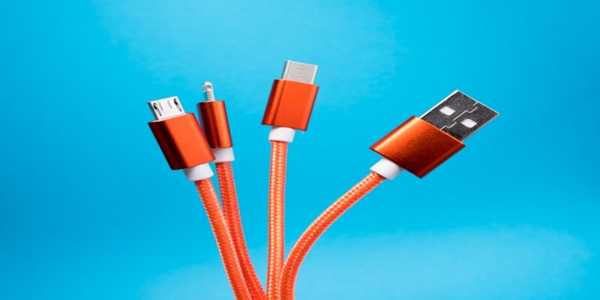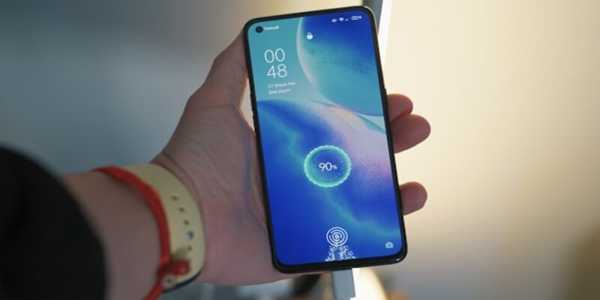Why USB-C Is Taking Over: The End of Cable Confusion?
USB-C is simple and the same on both sides. You do not have to tilt your phone or plug the wire in. 50% of the time, you try to plug in from the wrong end, and USB-C saves you from that trouble.
USB-C is simple and the same on both sides. You do not have to tilt your phone or plug the wire in. 50% of the time, you try to plug in from the wrong end, and USB-C saves you from that trouble. We know some less patient folks might find the 'wrong charger side' irritating sometimes. Still, there is so much more to USB-C. Want to know? Let's get started!
A Brief History of USB Connectors: From USB-A to USB-C
USB connectors have come a long way since their debut in 1996. USB-A was the original standard, offering slow speeds but universal functionality.
As devices evolved, USB-B and mini USB followed, catering to specific needs. Then came USB Micro-B, popular in smartphones but notorious for fragile ports.
The game changed with USB-C, introduced in 2014. Unlike its predecessors, USB-C is reversible, faster, and more versatile. It supports power, data, and video transmission through a single cable.
Today, USB-C is the go-to choice for manufacturers and users alike. It simplifies connectivity while meeting the demands of modern technology.
What Makes USB-C Unique? The Science Behind the Design
USB-C's reversible design eliminates frustration when plugging in cables. Its compact size fits smaller, thinner devices like smartphones and laptops.
It supports USB 3.2 and Thunderbolt 4, enabling faster data transfer up to 40Gbps. USB-C can also deliver up to 100 watts of power, making it suitable for charging larger devices like laptops.
Additionally, its ability to support 4K and 8K video makes it perfect for modern displays. The design emphasizes efficiency and adaptability, ensuring it meets today's tech requirements while being future-ready.

Universal Compatibility: One Cable for All Your Devices
USB-C works with smartphones, tablets, laptops, and even gaming consoles. With adapters, it bridges the gap with older ports like USB-A and HDMI.
This eliminates the need for multiple cables, reducing clutter. Tech giants like Apple, Google, and Samsung have embraced USB-C as a universal standard.
Its compatibility extends to accessories like chargers, headphones, and external drives. By unifying connectivity across devices, USB-C simplifies tech usage and reduces e-waste. It's a win-win for consumers and the environment.
Fast Charging and Data Transfer: The Speed Advantages of USB-C
USB-C supports Power Delivery (PD) technology, enabling faster and safer charging. It can fully charge a laptop in under two hours or a smartphone in minutes.
Data transfer is equally impressive, with speeds up to 10Gbps under USB 3.1. Thunderbolt-enabled USB-C ports achieve speeds up to 40Gbps, which is ideal for transferring large files or streaming high-resolution videos. These advancements save time and enhance productivity. USB-C's speed advantages cater to today's fast-paced, tech-driven lifestyle.
USB-C vs. Other Connectors: Why the Industry Is Making the Switch
USB-C outshines connectors like USB-A and Micro-B in versatility and speed. While USB-A is still common, it's bulky and lacks reversibility. Micro-B is fragile and supports slower data transfer.
Proprietary connectors like Apple's Lightning are exclusive and less versatile. USB-C's universal appeal, faster speeds, and reversible design make it the industry favorite. Its widespread adoption is evident in devices from leading brands. USB-C isn't just an upgrade; it's a necessary evolution for modern tech.
The Role of USB-C in Sustainability: Fewer Cables, Less Waste
USB-C helps reduce e-waste by eliminating the need for multiple cables. Its universal compatibility means one cable can replace several, reducing production and disposal costs.
Many governments, including the EU, mandate USB-C as a device standard, promoting sustainability. By choosing USB-C-enabled gadgets, consumers contribute to a greener planet.
Manufacturers are also designing eco-friendly USB-C cables made from recycled materials. It's a small change with a significant environmental impact.
USB-C in 2025: What Devices Are Leading the Charge?
By 2025, USB-C will dominate most consumer electronics. Flagship smartphones, tablets, and laptops already feature USB-C as a standard. Gaming consoles like the Nintendo Switch and accessories like VR headsets rely on USB-C. Even smart home devices and external storage solutions are embracing this versatile connector.
The trend extends to the automotive industry, with USB-C ports in modern vehicles. As technology advances, USB-C will continue to power innovation across various sectors.
Challenges and Misconceptions About USB-C: Addressing Common Concerns
Despite its advantages, USB-C faces some challenges. Not all USB-C cables offer the same features, leading to confusion. Consumers may mistakenly buy cables that lack fast charging or high-speed data transfer.
Additionally, older devices require adapters, which can frustrate some users. However, education and clear labeling can address these issues. Misconceptions about USB-C's durability are also unfounded; most cables are robust when used properly. Understanding these factors ensures users make informed choices.

The Future of USB-C: What's Next for Universal Connectivity?
USB-C is evolving to meet future demands with faster data and power delivery. Advances like USB4 and Thunderbolt 5 promise enhanced speeds and capabilities.
Wireless USB-C technology is also on the horizon, blending convenience with functionality. As more industries adopt USB-C, its potential extends beyond personal devices to industrial applications.
Future innovations will focus on improving efficiency, security, and sustainability. USB-C isn't just a trend; it's the cornerstone of next-generation connectivity. Thanks for the Read!